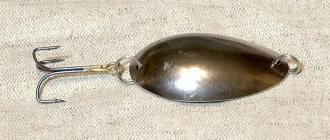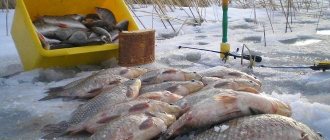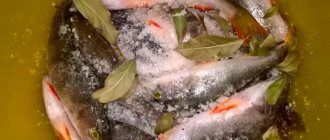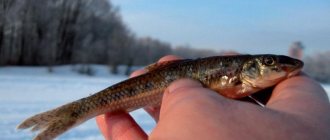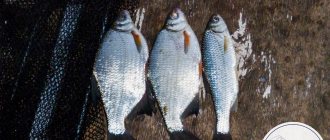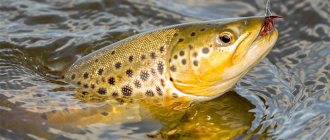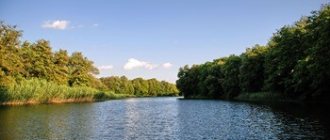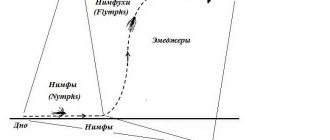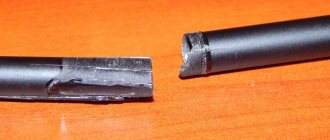Winter fishing, as you know, takes place in specific conditions. In order to get to clean water, and, therefore, to fish, it is necessary to drill a hole in the ice cover. And here several questions arise at once. Where to drill, what to drill with, which hole will be ideal. You can, of course, not focus on this seemingly simple aspect, just think, go out and drill. But no, any business has its own rules and subtleties, and chaotic drilling or chiseling will only lead to a waste of time and will not contribute to successful fishing.
Transparent ice
What to drill
Let's start with what to drill it with. Modern fishermen have a large number of tools in their arsenal. From ancient methods to modern technologies.
Ice pick
An ice pick is a fishermen's tool that can be used to make a hole in almost any ice. But this will require a lot of physical effort and skill during winter fishing. The ice pick is good for making large mines for winter fishing with nets, but now it is used less and less. The ice is also crushed with an ice pick if a large trophy specimen does not fit into the usual drilled diameter. I haven’t seen any fishermen breaking ice with an ice pick lately. Although it is not particularly difficult to do this on the first ice.
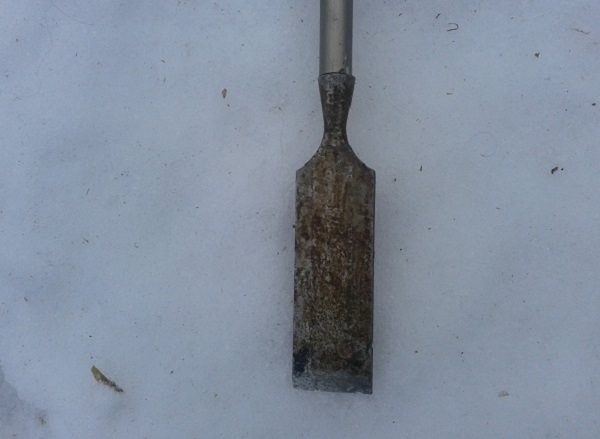
Fisherman's ice pick
Ice screw
An ice drill is a more modern tool, a mechanical one. Modern technological processes have affected it. Now, with an ice drill during winter fishing, you can easily and silently drill a hole from 80 to 200 mm, depending on the purpose of fishing. Domestic and imported ice screws are reliable and serve fishermen well. The size of the hole depends on the size of the ice auger. The hole is drilled for a specific fish. If you're targeting a giant pike, then of course drill a bigger hole. But usually a 12-centimeter hole is sufficient for winter fishing. In the end, the fish can be pulled up with a hook.
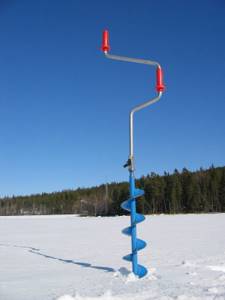
This is how you need to hold the ice screw
Motor drill and screwdriver
A motor drill is already modern technology for the benefit of people. There are gasoline or electric ones. Quickly, without much hassle, you can drill any number of holes of the diameter you need. Two disadvantages: it is very noisy, which has a negative impact especially on winter fishing on the first ice, and it is hard to carry.
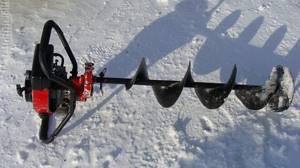
Modern motor drill
To mechanize the process, an ordinary screwdriver with an auger attachment is also used. It also makes the hard work of drilling easier.
How to navigate when looking for a place to fish on an unfamiliar body of water
Arriving at the reservoir, the bends of the shore will help determine the approximate depth in a particular area. A spit or cape that goes straight under the water indicates that there will be a shallow for about 10 meters and, on the contrary, a steep line indicates the presence of great depth. Therefore, when choosing a place on an unfamiliar body of water, you should always carefully look at the bends of the coastline. In addition, the presence of depth will be indicated by a bay located between the ridges.
If you plan to fish on the river, then it is recommended to start the process by drilling holes. This must be done across, starting from the shore. After this, using a depth gauge, the depth in each hole is checked, having found the desired depth, holes from the selected point are drilled in both directions along the shore. It is worth noting that in rivers, fish most often accumulate in deep pools and holes; only in warm and good weather will they go out onto sandbanks and closer to reed thickets.
On any body of water where there is no current, a search for a promising place is carried out, just like on a river. Holes are drilled from the shore into the depths of the reservoir, the task is to find an area with maximum depth, which is selected taking into account weather conditions and the winter period.
Where to drill
If you have decided on a drilling tool for winter fishing, you need to decide where to drill in order to achieve a positive result. To do this, you need to know where the fish lives in a particular period or where it likes to eat. You need to study the bottom topography well, understand where the drop-offs, edges, holes and shoals are. If you do not go to a specific place, but start checking the reservoir, then it is customary to hole the ice from the shoreline deep into the reservoir. Having retreated 5–6 meters from the shore, you can make the first hole. The distance between the holes depends on what kind of bait you are going to fish with. If you are fishing in winter with a balance beam, then about 10 meters, with a spinner – 5 m, with a jig – 2 m. If you drill more often, you can illuminate the point. Each subsequent one should be different from the previous one, the depth should be different. The optimal number of holes is up to 20 pieces. If it is less than 10, then you will not be able to determine the characteristic features of the bottom. If more than 20, then it will be difficult for you to catch such a quantity. If the hole starts to bite, it means you have found the horizon where the fish is standing. Drill more holes parallel to the shore at this level; most likely, luck will be on your side.
How to choose a place for fishing in winter, where to drill holes?
Of course, it is fair to note that drilling holes needs to take into account many factors. It is necessary to be able to correctly determine which areas may be the most promising. You can identify such areas in an unfamiliar body of water based on external factors, but this is the case if you plan to fish in the coastal zone; in all other cases, it is recommended to look around and start from the area where the largest number of anglers accumulate.
When choosing a place, you should always take into account what kind of fish you plan to catch. For example, pike loves areas with underwater vegetation, perch and pike perch prefer steep bottoms with snags, roach and silver bream love sandy bottoms.
A huge advantage of winter fishing is that the angler can easily reach any promising point that remains out of reach in the summer. Of course, there are certain difficulties when choosing a place, but not for an experienced fisherman who has noticed good places for winter fishing since the summer. It is to them that he rushes first. The choice of place for winter fishing should be carried out taking into account not only the depth, but also the topography and structure of the bottom, current speed, and the presence of underwater obstacles (snags, rubble, large stones).
In the reservoir, in different parts, there are various underwater and above-water plants, for example, reeds, reeds, horsetail. The slave treats each of the plants differently. Many fish, especially peaceful inhabitants of water bodies, rarely enter reed thickets, since its noise frightens them. Reed thickets in the coastal zone with a depth of more than 1.5 meters opposite attract fish. Here you can find predators such as perch and pike, which ambush peaceful inhabitants, namely roach, bream, and silver bream.
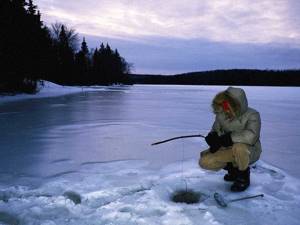
Fish are most attracted to areas where horsetail grows. For the first days of winter, this is where you should start drilling holes, especially if you plan to catch perch, roach or bream. Why does horsetail attract fish? This is due to the fact that the plant is able to enrich water with oxygen, which is especially important in winter. When planning to go fishing in areas where horsetail grows, regardless of the winter period, it is important to be extremely careful, since the ice here will always be much thinner than in any other place in the reservoir.
An excellent place to fish in winter is the shallows that emerge from a deep hole. Such spots attract bream, perch, and roach; they can be caught both on the shallows themselves and at the edge of the depth difference. Note that even in winter the fish chooses areas with underwater vegetation. But not just any grass attracts fish.
For example, if during the fishing process you pull out the tackle and find pieces of eladea grass on the hook, then you can immediately move to another area, since mainly small perch and ruff will bite here. It’s another matter if there is a twig or leaf of pondweed on the hook; it’s worth staying in such a place, since such thickets of grass attract not only roach, bream, but also bream; you can also find large perch and pike here.
An excellent place for fishing in winter is the area where the sandy bottom transitions into pebbles. Here you can find almost all fish that continue their active lifestyle in winter. Riffles always remain promising for fishing, but fishing in such an area should be carried out with maximum safety.
Most anglers believe that they need to start searching for fish from a cluster of fishermen, since this particular area has already been baited, which means there will be fish there. Often, when anglers come to a pond, they immediately begin checking old holes, but as practice shows, most often this does not give the best results. It would be more correct to drill new (fresh) holes and start the search from them. When looking for a place to fish, you should focus not only on the depth, but also on the structure, bottom topography, and the presence of underwater obstacles.
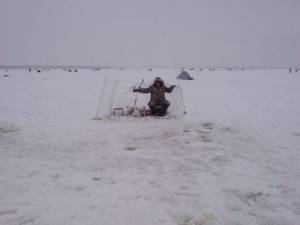
How to drill
You need to drill holes with your back to the wind. Some people count the revolutions of the drill in the first hole. Then in the next hole, without completing two turns, they pull out all the resulting crumbs and throw them away so that they don’t crunch underfoot.
When the ice screw reaches the water, do not pull it out immediately, do not create unnecessary noise. It is better to pull the ice crumbs out of the hole by moving the ice screw in reverse.
There is no need to drill out old holes left by other fishermen. The ice drill jams in them and this drilling will take more time than drilling new ones.
After drilling, do not place the wet ice auger on the snow, the auger will become covered with ice, and you will have to spend precious fishing time cleaning the ice auger knives. It's better to wrap it in ice.
If you fish with several fishing rods, then the holes should be located no closer than half a meter from each other. Otherwise, you may tangle the line.
What are “holes” and how to make them
To fish under the ice, you must first somehow get the gear under the ice. ice holes were made for this purpose , i.e. “pro” - “cut” the ice, in other words - chopped the ice.
And although this method sometimes remains relevant to this day, in the modern world for winter ice fishing they mainly use holes - holes in the ice made using a rotating tool.
The word “hole” means a hole, a depression, an ice hole. I found that in some regions the word “lumka” was also used for this, since perhaps this word came from the German - luhme (ice hole).
In English, holes in ice are called hole, in French - trou .
Ice in English - ice , in French - glace .
Accordingly, “How to make a hole in the ice” in French: “comment faire un trou dans glace” , in English: “how to make a hole in the ice” .
Well, now let's look at what tools are used to make holes in the ice for modern winter fishing.
1. Ax
This tool can be useful in two main cases - on first ice and for opening old holes. An ax in English is axe , less often hatchet , in French - la hache .
When the ice is still thin, you can quickly break it with an axe. At the height of the winter season, fishermen are constantly making holes in popular fishing spots, so instead of drilling new ones, you can simply open the old hole with an ax.
The ax can also come in handy if you fish with brimbali, the local girders. Sometimes in severe frosts the stand freezes strongly to the ice, and an ax can help in quickly removing it from the ice.
2. Ice pick
An ice pick, like an axe, can help out at the beginning and end of the winter season. On thin ice, an ice pick is an indispensable tool. With its help, the strength of the ice is probed. Hit two or three times in front of you, if the ice holds up, then you can go. If the ice breaks, it means there is a dangerous place ahead.
The pick can also be successfully used not only for hollowing out new holes, but also for opening old ones.
Ice pick in English - ice fishing chisel , in French - ciseau à glace or ciseau à pêche sur glace .
To make holes and walk on the first ice, long picks are used so that you can work with it while standing. There are also mini-picks that are small in length or special paddle handles on scoops; they are convenient for opening not very frozen holes.
3. Hand ice auger
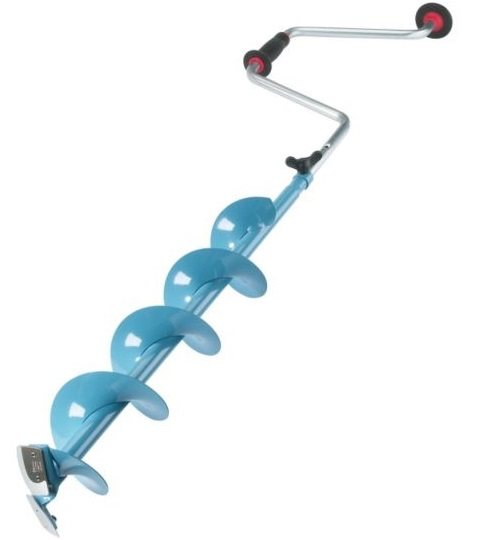
In English, an ice auger is most often called ice auger , and a manual one, respectively, is called hand or manual ice auger . The word auger means auger, twist drill. Also sometimes an ice drill is called drill (drill, auger, drill).
In French, an ice auger is most often called tarière à glace , manual, respectively - tarière à glace manuelle . The word t arière means drill, drill. Also sometimes an ice drill is called perceuse à glace (ice drill) in French.
In this case, the rotation of the tool is carried out using the hands, which is why it is called “manual”. At the same time, there are two main types of ice auger handles, which work differently.

In Russia and neighboring countries, they most often use an ice auger with two rotating handles (in the picture on the left), but in Canada you can most often buy an ice auger with a fungus on top (in the picture on the right). The first ice auger is rotated with both hands, and the second ice auger must be held by the fungus on top with one hand, creating an axis for drilling, and rotated with the other hand.
For those who are accustomed to the first option, it is very inconvenient to switch to local ice screws with fungus. I had no experience in drilling with a two-handed ice auger, so I mastered the “Canadian” drilling model without any problems. Therefore, when buying an ice screw in local stores, keep this feature in mind.
By the way, the direction of movement of the ice drill when drilling is clockwise, while for domestic ones, on the contrary, it is counterclockwise.
The price of such ice screws in local stores is around 100 Canadian dollars. I noticed that the smaller the diameter of the drill, the slightly cheaper it is.
When choosing a hand drill, you must take into account that the larger its diameter, the more effort is required to drill holes. From personal experience I was convinced of the correctness of this statement. My first local drill was 8 inches, i.e. 20 cm. To drill 10 holes (the limit for the holes) you had to sweat a lot. So I switched to the smallest size available in local stores - 5 inches, i.e. 12.5 cm. Drilling with this drill has become much easier, and besides, the diameter of the hole is well suited for installing domestic vents.
Standard sizes in stores = 5, 6, 8 inches. But I also saw a very “small” one - 4.5 inches.
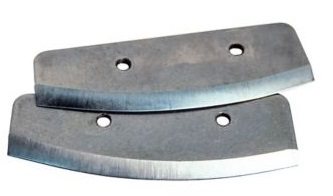
Replacement knives in English are called replacement ice auger blades , in French - lames de remplacement de tarière à glace .
And one more thing about the ice screws that you can buy here. In stores, Swedish ice screws are called Swede-Bore , and Finnish ones are called Finbore . The Swedish ones have a handle with a mushroom, while the Finnish ones are two-handed.
In addition, Finbore is classified as a professional series, as they have so-called “ spherical knives ”. These knives can be used to drill through any ice, wet or dry, with equal success, and somewhat faster than an ice drill with straight knives. But such a drill also costs 25 percent more.
4. Motor drill
Motorized drills use a gasoline engine, which makes drilling holes much easier. If the ice is thick, then you can easily make a hundred holes during the day without breaking a sweat.
One of the disadvantages is the noise made by the motor. But this bothers neighboring fishermen more than it bothers the fish, especially if you fish at depth.
In local Canadian stores, drills are sold in large diameters - 8 and 10 inches, i.e. 20 and 25 cm. These hole diameters are well suited for catching trophy fish. When fishing with local girders (brimbali), the large diameter of the holes is not a hindrance. They freeze more slowly than small holes. But domestic girders are not suitable for them - the diameter of the girder base is less than or equal to the diameter of the hole.
The main disadvantages are the weight and price of the ice drill. A motorized drill costs around 500-700 Canadian dollars, plus you should definitely buy a sled to go with it, since you can’t carry a motorized drill very far with your hands.
5. Electric drill
An electric drill is an ice drill with an electric motor. This ice auger is several kilograms lighter than a motorized auger, but the main thing is that it is much quieter and does not smell of exhaust gases.
Recently, electric drills from different companies have appeared, but their price is around the cost of a gasoline motor drill, i.e. 500-700 Canadian dollars.
This tool makes fishing much easier. Modern batteries hold a charge very well, and provided that one charge is enough for 50-80 holes of meter-long ice, then with such an ice auger you can quickly make holes for a whole company of fishermen without any problems.
In such models, I also liked the reverse function - this is the ability to drive slush from the hole under the ice. There is no need to scoop out the remaining ice from the hole.
6. Screwdriver with a special attachment
The most interesting device for drilling holes for me was a high-quality screwdriver, which can be connected to the auger of a hand-held ice auger with a special adapter.
The adapter itself costs 10-15 Canadian dollars, and fits the augers of most models of ice augers that can be purchased at local stores.
Adapter for an ice drill in English - electric ice drill adapter , in French - adaptateur à tarière pour perceuse .
But to drill holes you need a high-quality screwdriver, preferably with two batteries in the set. But even the best screwdriver will be much cheaper than a motor drill or electric drill. And if the farm already has a suitable device, then the transition from a hand drill to an electric drill will be very simple.
For this option, you will need a screwdriver with the following technical characteristics: at least 18 volts (the more, the more powerful), torque at least 80 N/m, battery capacity at least 3 Ah, LITHIUM-ION battery.
The experience of other fishermen shows that using a screwdriver you can effectively drill holes on both dry and wet ice, while with a hand-held ice auger it can sometimes be difficult to drill on wet ice in March.
The main thing in this option is to monitor the charging of the batteries and not to freeze the batteries in the open air. I made holes to hide the batteries in the warmth.
Of course, for most fishermen this is rather exotic, but this method of drilling holes continues to develop. Of course, one battery is not enough for a hundred holes, but with a small auger diameter, this is a very affordable improvement to a hand drill.
The main disadvantage in this option is that you need to be attentive to the process of drilling and pulling the auger out of the hole. The auger can jam, so it is better to drill the hole in one go. When the hole is drilled, you need to pull out the auger by holding it, and not by the screwdriver. There is always a possibility that the adapter could fall out of the screwdriver, which could cause the auger to sink into the hole. Therefore, you must use either a special disk attachment for an auger with a larger diameter than the hole, or use adapters with special side handles. This prevents the auger from falling into the hole.
In general, it’s an interesting method, but it requires care and attention in the process of drilling a hole.
7. Saws
Saws are usually used to make rectangular holes. To do this, use hand or chain saws. Most often this is done in pourvoiries in order to put houses on these holes. I haven’t seen them here in regular amateur winter fishing.
Some general rules when using ice augers:
1. Be sure to cover the knives with special caps when transporting the ice auger. Usually they already come complete with an ice auger. The knives are quite sharp, it is very easy to get hurt.
2. To avoid injury from the blades of the ice drill after drilling holes, do not lay it on the ice. It is better to drill a little into the ice so that it stands and does not lie with open knives.
3. Never drill out old holes. Firstly, the ice freezes unevenly and the drill jams when drilling. I just broke my first drill like this - I broke off the knives from the auger. It is better to drill a new hole nearby than to break the drill or its handle. Secondly, some bad fishermen have the habit of throwing garbage and leftover food into the hole rather than taking it with them. Therefore, there is a risk of running into an “unclean” hole.
4. When transporting the electric drill, you must be careful not to accidentally press the start buttons. To avoid this, it is better to disconnect the power supply of the drill while transporting it.
5. No matter how sophisticated a motor or electric drill is, if you do not take care of the knives, motor or batteries, then the effectiveness of such a tool drops sharply.
Summary: There are many ways to make a hole in ice. Choose the method that suits your fishing conditions, the fish you catch, affordability and storage space for the tool.
Par hole
It is very good to use the paired holes method for winter fishing. The second is drilled half a meter from the first. In the first hole, complementary foods are gradually introduced. Complementary food should be in the form of cake or granules, it is good if a trail is formed.
The gear is thrown into both holes. In the second hole we do not provide complementary feeding; we only use gear with a nozzle. The small fry will be the first to be interested in complementary feeding. But after the small things, large specimens will follow. They will approach a little to the side just near the second hole.
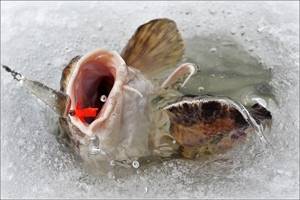
Fishing
